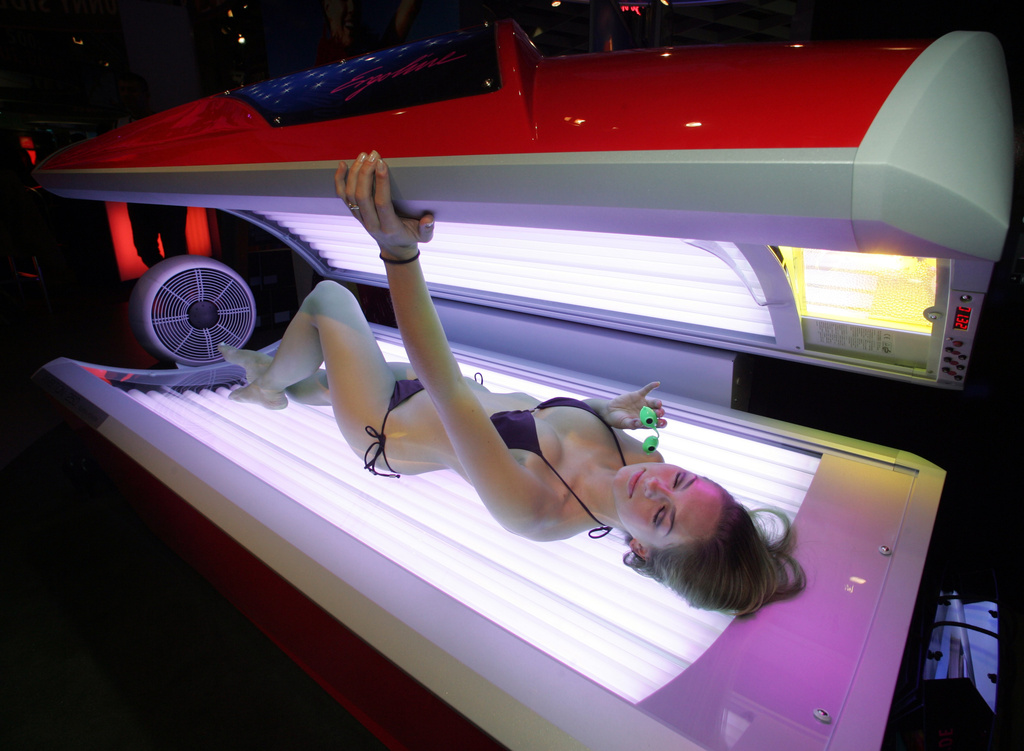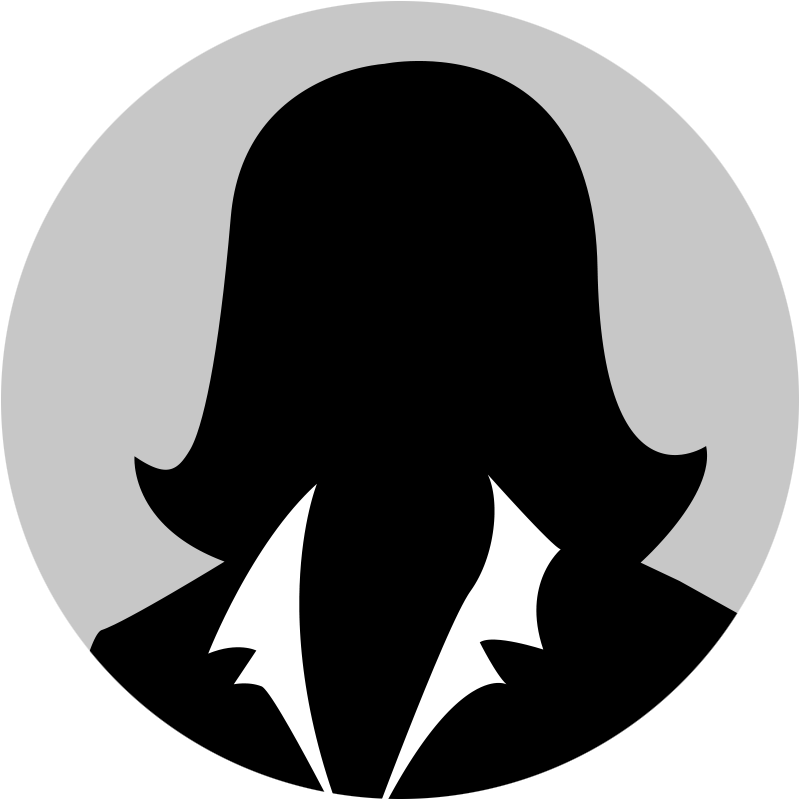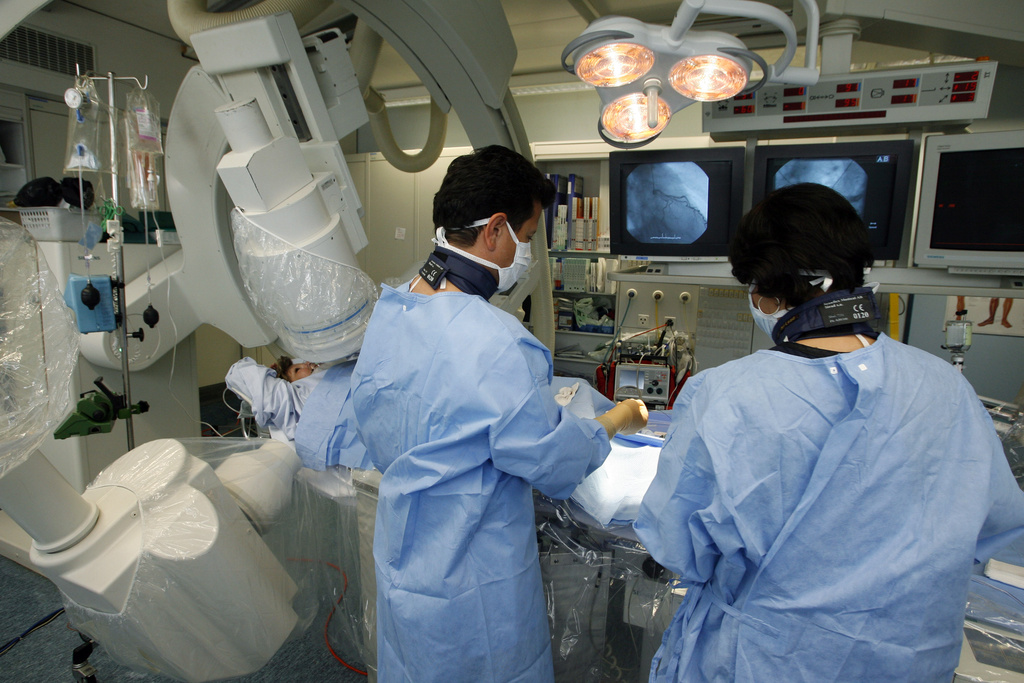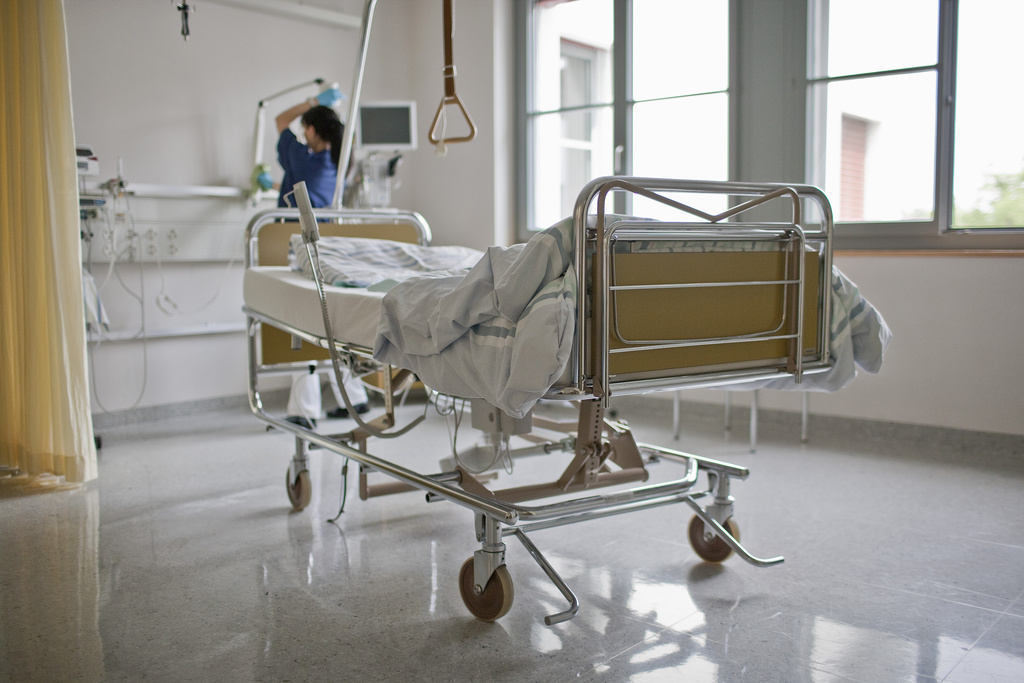No quick cure for high skin cancer rate

Amid record April temperatures, news that Switzerland has the worst skin cancer rate in Europe should have sun worshippers worried.
Switzerland has more skin melanoma cases than 40 other European countries, with 22 new cases recorded annually for every 100,000 people, the Federal Health Office revealed this week. Globally, the country has the third highest rate after Australia and New Zealand.
This, after the mercury topped 30 degrees Celsius in Lugano on Friday – the earliest very hot day of the year since Swiss records began. North of the Alps temperatures reached 26 degrees for just the third time ever for the month of April.
In presenting the cancer rates, the Health Office said excessive exposure to UV rays was the main cause of skin cancer.
The Swiss have three ways of getting too much sun: they holiday in hot destinations, spend a lot of time outdoors in what is a high altitude alpine nation, and they love sunbeds.
While it remains tough convincing people to change habits in the first two
instances, sunbed use is one area that can be tackled practically.
According to the Health Office study, one in ten Swiss use sunbeds regularly. One in two women and one in four men have used them in the past. Worryingly, most young people interviewed for the study were not aware of the risks associated with exposure to UVA rays from sunbeds.
Take responsibility
Off the back of the study, the Health Office will be asking the solarium industry to prominently display notices warning about the dangers of sunbeds.
“It’s about taking responsibility for oneself. If someone takes these risks into account and still uses a sunbed, that’s their choice. But we would like people to be aware of the risk,” Beat Gerber, a scientific researcher in charge of optical radiation at the Health Office, told swissinfo.ch.
The solarium industry says sunbeds are “calculated” UV exposure, where the level is consistent and machines can be switched off and on as compared with the variable intensity of UV rays coming from the sun.
But a Green party parliamentarian is pushing for stricter measures to regulate sunbed use.
Franziska Teuscher lodged a motion in parliament last year to ban people under 18 from solariums and for users to be better warned about the risks. The motion was backed by the Swiss Cancer League but was rejected by the cabinet last spring. It has yet to go before the parliament.
“Solariums are banned in Germany among young people. In Switzerland we don’t know much about them,” Teuscher told swissinfo.ch.
“Now with this report, which shows that we have a high skin cancer rate, I am convinced that we need to address this issue, to really ensure we have prevention in this domain.”
Year-round exposure
Switzerland has been hovering around the top of European and worldwide skin cancer tables for a number of years, so the fact that it’s the worst place for skin melanoma was no surprise to the Federal Health Office.
“But it’s not good that Switzerland is still in this top position. For us it’s a clear message to take a clear view on sun protection on the one hand and on sunbeds on the other,” said Gerber.
Many Swiss spend their free time in the open air, on a bike or in the garden, typically without sun protection in the spring, he said.
Holidays abroad in the winter and summer give people high UV exposure all year around, and walking in the mountains – where there is around ten per cent more radiation than in the lowlands – is a popular activity among Swiss.
And then there’s sunbeds. Young people interviewed by the Health Office also admitted using a sunbed twice or three times a week. Those aged under 35 are most at risk of developing melanoma from sunbeds. Crucially, this includes the 16-25 age group that cares least about the risk.
“They like risks. It’s hard for us to tell them there is a risk and to use protection. They don’t want to hear it,” said Gerber.
Repetition
Faced with this, the Health Office aims to keep informing people about the dangers, and hopes to encourage people to act responsibly.
“There is a culture of taking responsibility for oneself in Switzerland. But you have to address the issue again and again,” said Gerber.
“The most important thing is to ensure that people have all the information needed to make the decisions. If people don’t know, that’s the danger.”
Meanwhile, the Swiss Cancer League has urged people to take advantage of National Melanoma Day on May 9 when participating doctors are offering free check-ups of pigment.
Spokesman Dieter Wüthrich noted that while cancer rates are high, the number of related deaths is lower than the rest of Europe – a sign of Switzerland’s good prevention and treatment methods.
The league recommends regular checks of pigmentation and for people to cover up between 11am and 3pm, wearing a hat, sunglasses and sun cream.
Repeating the message is the only way people will start to change their habits, said Wüthrich.
“We have to say it again and again. The sun itself is not bad, but you have to protect yourself.”
The Federal Health Office has posted a warning on its website saying that current meteorological conditions require more protection from the sun earlier than usual.
UV ratings are posted on the website daily. There are three kinds: UVA (which are 95% of UV rays coming from the sun); UVB (5% remainder, 1,000 times more likely to cause sunburn); UVC are absorbed by the atmosphere and do not reach the earth.
The Office warns strongly against sunbeds, saying it can cause skin cancer and other problems. The International Centre for Cancer Research and the World Health Organization classify solariums as a carcinogenic product.
Rays from a solarium are very different to those from the sun. The sun’s UV rays are more balanced and weaker than those of a sunbed.
Four per cent of the sun’s rays are UV radiation. Even without feeling heat, it can damage cells and burn eyes. In the long-term it can cause premature aging in the skin.
(Federal Health Office, 2011)
In most cases the melanoma occurs before the age of 50. Melanoma is also one of the most common kinds of cancer among young people. Over the past 20 years, its frequency has doubled.
The study interviewed 1,000 people aged 16-50+ from across Switzerland by phone.
Some of the key findings on sunbed use were:
38% of Swiss aged 16+ have used a sunbed at least once.
Many users have very fair skin.
75% of 16-25 year olds use sunbeds at least once a month.
One in five has had a sunburn from a sunbed.
Many users think (incorrectly) it will help prepare for summer sun tanning.
Solariums generally do not supply enough information about the risks.

In compliance with the JTI standards
More: SWI swissinfo.ch certified by the Journalism Trust Initiative












You can find an overview of ongoing debates with our journalists here . Please join us!
If you want to start a conversation about a topic raised in this article or want to report factual errors, email us at english@swissinfo.ch.